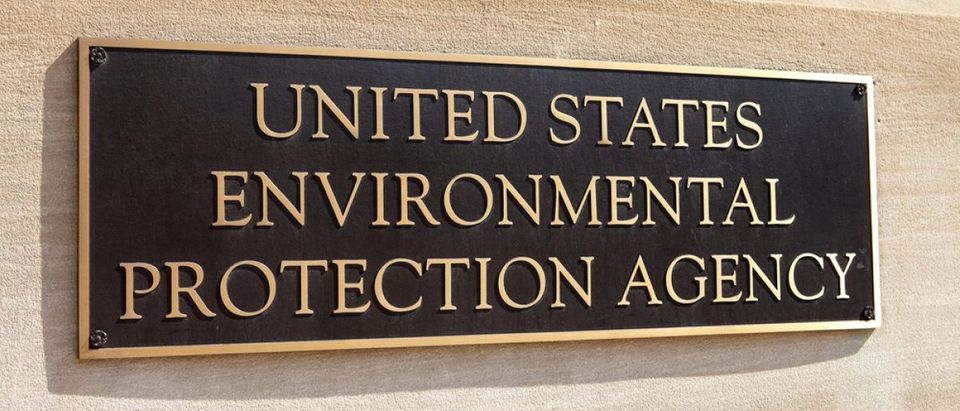Environmentalists are worried President Trump will stop the Environmental Protection Agency (EPA) from banning a pesticide the agency admits is harmless.
EPA’s comment period on banning chlorpyrifos recently ended, and the agency must decide what to do by March 30th to comply with a court order.
Environmentalists have pushed heavily for a ban, as have major media outlets. The New York Times, for example, recently ran an ominous opinion piece titled “Protect Our Children’s Brains.” But now activists are terrified that Trump will prevent a ban.
“EPA is trying to ban this pesticide,” Dr. Julie Goodman, an epidemiologist and toxicologist at Harvard University, told The Daily Caller News Foundation. “If you look at the science though, it is clear that the current uses and some of the banned uses are safe.”
EPA wants to ban chlorpyrifos over concerns that it contaminates drinking water and food. Chlorpyrifos has been used on citrus fruits, apples, broccoli and various other crops since 1965. U.S. farms use about 6 million pounds of chlorpyrifos each year. If nothing changes legally, the EPA will no longer allow incredibly small trace amounts of chlorpyrifos in food, effectively banning the pesticide in the U.S.
The EPA’s own analysis found that “there do not appear to be risks from exposure to chlorpyrifos in food.” The agency’s own website says chlorpyrifos is safe for humans in “standard” amounts. The EPA is being pressured by environmental groups to ban the pesticide.
“The objections to chlorpyrifos are mostly based on one bad Columbia [University] study, ” Goodman said. “It is a very big leap and I think some people have shown that it’s not even accurate. It you look at the main paper on chlorpyrifos and neurological effects, it admits that there are no effects. The risks in the low or medium exposure were actually lower than the risks of no exposure to the pesticide.”
Goodman thinks the Columbia study is flawed and that there’s evidence of some data manipulation, as it goes against numerous other studies on the pesticide.
“They had to do a lot of work to get to the point,” Goodman told TheDCNF. “If you have to do that much work to show there is something going on, there’s probably nothing going on … All the other research points to a lack of effects at levels thousands of times higher in animals than they claim is harming humans.”
The Natural Resources Defense Council and Pesticide Action Network North America, filed a federal lawsuit seeking a national ban on chlorpyrifos over theoretical risks of drinking water contamination and alleged contamination of food by the pesticide. But, the EPA admits that it hasn’t completed its assessment of the pesticide’s effects on drinking water and that “certain science issues” regarding chlorpyrifos use are “unresolved.”
The environmental groups also claim that the pesticide interferes with the brain development of fetuses, infants and children. This claim goes against the American Academy of Pediatrics, which states “The risks of pesticides in the diet are remote, long-term, and theoretical, and there is no cause for immediate concern by parents.” Green objections are largely based on the Columbia study.
“This isn’t being precautionary,” Goodman noted. “We have all this information on the pesticide that people are just ignoring. They’re saying that this one study trumps all other science. That’s misrepresenting the science.”
Goodman points out that much of the data the Columbia study is based on hasn’t been released to the public, or even to the EPA.
“The Columbia study isn’t releasing its data either,” Goodman said. “Why not give it to the EPA so they can re-do the calculations? What is there to hide? The evidence points to the fact that this finding is a statistical anomaly, not really indicative of causation.”
Health risks from chlorpyrifos only come from extreme exposure, such as accidents or spills during the manufacturing process, which is no different from the vast majority of pesticides.
The potential chlorpyrifos ban is connected to a common criticism of the EPA, that the agency allows “legal collusion” between itself and various environmental groups through a process called “sue and settle.” The EPA gets sued by environmental groups for failing to meet regulatory deadlines, then the EPA agrees to settle the dispute with these groups out-of-court. These settlements are written behind closed doors with no input from affected parties while still having the full force of law, effectively allowing the EPA to write its own rules with only environmental groups having input.
Between 2009 and 2012, the EPA chose not to defend itself in over 60 lawsuits from special interest groups, resulting in settlement agreements and more than 100 new EPA regulations.
Send tips to andrew@
All content created by the Daily Caller News Foundation, an independent and nonpartisan newswire service, is available without charge to any legitimate news publisher that can provide a large audience. All republished articles must include our logo, our reporter’s byline and their DCNF affiliation. For any questions about our guidelines or partnering with us, please contact licensing@dailycallernewsfoundation.org.


